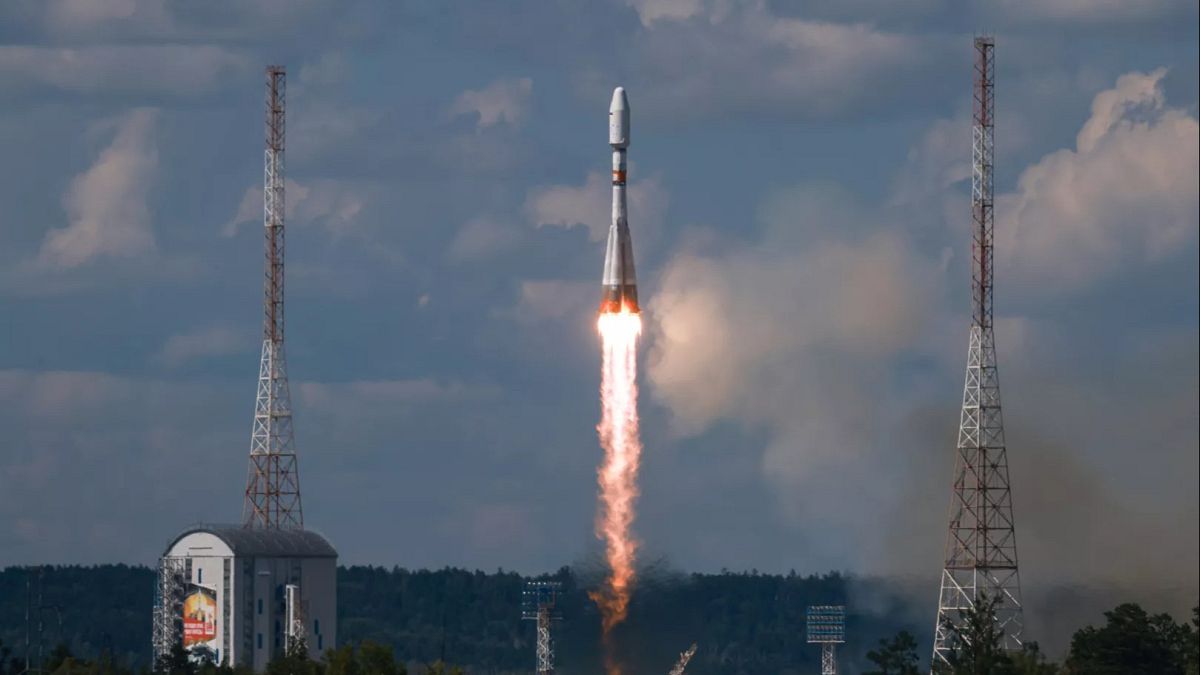The Iranian communications satellite was sent into orbit on a Russian rocket on Friday. This is a launch that emphasizes strong ties between the two countries.
The Soyuz rocket was lifted as it was planned from the Vostochny Launchpad in the Russian Far East.
Two Russian Ionosphere M Earth observation satellites were carried, along with Iran’s Nahid-2 satellites and 17 small Russian satellites, and placed them in designated orbits.
“The Nahid-2 satellite’s operational life is planned for two years,” said Hassan Salariyeh, head of the Iranian Space Agency.
“Satellites typically have a five-year lifespan at low altitude (LEO) and a 10-year lifespan at high altitude (GEO).”
Russia, which signed a “strategic partnership” treaty with Iran in January, denounced Israel and the US strike last month.
Russian President Vladimir Putin suggests that Moscow can help negotiate a settlement that will allow Tehran to pursue a peaceful atomic program, whilst complaining of Israel’s security concerns.
At the same time, Putin emphasized that Tehran did not seek military assistance from Moscow, noting that the Partnership Treaty did not envisage such assistance.
Russia has been in a delicate balance in the Middle East for decades, trying to maintain a warm relationship with Israel, even as it has developed strong economic and military ties with Iran.
Friday’s launch was announced before nuclear negotiations between Iran and the UK, France and Germany began in Istanbul, after Tehran tested one of the satellite-carrying rockets on Monday on Wednesday.
Iran – Russia Space Cooperation
The launch of Nahid 2 was a continuation of Iran and Russia’s cooperation on a venture into space.
In November, Russia launched an Iranian satellite called Kousal and Hodhod. It was first launched on behalf of the country’s private sector.
It followed the previous two Russian launches of Iranian satellites in 2022 and 2024.
NAHID series satellites (1 and 2) were designed and built by the Iranian Space Agency for telecommunication missions at the Iranian Space Institute.
According to the Iranian Space Agency, satellites use solar arrays on the hull to provide the necessary power.
Development of NAHID 2 continued despite technical issues and delays in the launch of the NAHID 1 satellite due to international coordination. Four stations have been built in different parts of the country to complement the performance of the NAHID-1 satellite.
The NAHID-1 was originally to be deployed in the summer of 2018 along with the SEFIR-1 satellite, between 250 and 375 km, but the mission was cancelled due to a technical incident prior to the launch of the ambassador.
The Iranian Space Agency has announced plans are ongoing for the NAHID 3 project, which is described as being more advanced.
Iran has sent satellites into orbit, what Western analysts see as an effort to boost their aerospace program.
According to the Iranian Space Agency, these projects are in line with Iran’s plans for self-sufficiency in space technology and the development of commercial and research applications.








